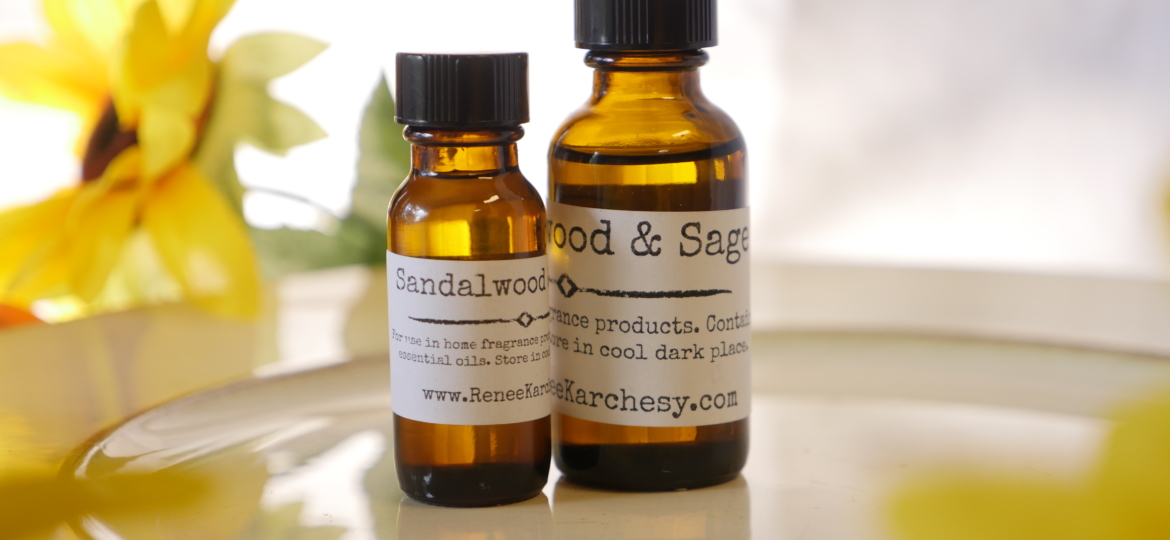
Sandalwood Oil – Aromatherapy For The Mind, Body, And Spirit
Sandalwood is one of the world’s most widely used essential oils, prized for its scent in perfumery, for its therapeutic effects in Chinese, Ayurvedic and Tibetan medicine systems, and for its ability to center the mind in meditative yogic traditions.
Sandalwood essential oil is most often extracted via steam distillation from the wood of the Sandalwood tree, with the heartwood of the roots producing the highest quality oil. Sandalwood is an evergreen, growing to a height of 9 meters, with leathery leaves and small purple flowers. Native to southern tropical Asia, the tree is parasitic, gaining its nutrients from one of several other tree species. Because it can only be grown this way, and due to its seemingly strict set of environmental conditions, Sandalwood is difficult to propagate. To add to the challenge of successful cultivation, Sandalwood takes nearly 30 years to mature before yielding oil of any worth.
Sandalwood essential oil has a woody, balsamic, sweet and slightly musky aroma; it is a pale yellow, greenish or brownish liquid with excellent tenacity (the aroma tends to last a long time) and superior fixative properties. There are several varieties available, with Santalum album is considered the most important therapeutically. The Mysore region of eastern India is thought to produce the highest quality of this oil type, though its harvesting is creating a strain on the area’s natural environment. Recently, an oil of the austro caledonia species has been produced on the South Pacific island of Vanuatu from successfully cultivated Sandalwood trees. This oil has a fantastic aroma, with a woody, smoky scent that can remind one of being at the beach – an excellent base note in perfume and cosmetic blends.
In the West, Sandalwood oil is perhaps best known in the west as a natural, woody, sweet body perfume used ‘as is’, or as a familiar aroma in many cosmetics, aftershaves and the like. In the east, however, Sandalwood’s importance in cultural and spiritual traditions cannot be overstated. The wood is carved into furniture, religious icons, used to build temples and burned as incense in a great variety of ceremonies. The oil is used to anoint the dead, helping their transition to the next life. In Burma, women sprinkle it on passersby on the last day of the year for the release of sins. In Hindu marriages, Sandalwood is burned in a tent such that the smoke surrounds the bridal couple. For the meditative yogi, the oil and incense encourage a serene state of mind, supporting alignment of the individual with the universal Self.
In the traditional Indian medicine system of Ayurveda, Sandalwood is valued for it’s ability to cool the fire of pitta. It is indicated for inflammatory conditions, such as inflamed skin, or intestinal and genitor-urinary conditions that require cooling.
Modern aromatherapy considers the oil an effective skin care agent for dry skin, general irritation and acne; it can help in cases of bronchitis, catarrh, dry persistent coughs, laryngitis and sore throat.
Beyond the physical body, Sandalwood essential oil is a great tonic for the hyper-active mind. In practical terms, the oil is considered an anti-depressant through it’s ability to relieve hot, agitated emotional states, and to assist in release from over-thinking and worry. More esoterically, the aroma is considered ‘divinely sweet’ and softly balsamic, characteristics which evoke the grounding of the Earth element. It is said to release one from the ‘tyranny of the intellect’ which can cloud one’s true nature, bringing about a more serene state unifying body, mind and spirit. From this quiet, unified state comes forth the true creative mind, finding infinite possibility in the here and now. It is in this peaceful, unified state where meditation can affect profound transformation.
Recommended essential oil blends for calming the mind are as follows – these can be used for general massage, reflexology, or applied to pulse points and temples: For ‘obsessive’ thinking, try four (4) drops of Sandalwood and two (2) drops of Vetiver in one tablespoon of carrier; for a detached analytical state try three (3) drops Geranium, two (2) drops Sandalwood and one (1) drop Patchouli in one tablespoon of carrier. These blends can also be created for use in a diffuser by omitting the carrier oil. For a great perfume also with soothing qualities, combine three parts Sandalwood and two parts Vanilla oil – the blend produces a wonderful tropical island aroma.
Finally, Sandalwood is one of the few essential oils which improves with age. Due to increasing demand, the oil’s price is climbing significantly every year – it can be worthwhile to purchase a little more than you think you’ll need immediately, as storing it for some time will only result in a richer oil in the future. Of course, samples are also a great place to start, as you can first find a Sandalwood that truly suits you.


